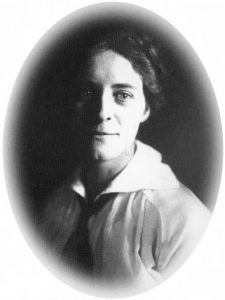
(May 25, 1882-Oct. 25, 1967). Born in Salem, Ohio, Dorothy Morlan lived most of her adult life in the eastside suburb of
Her art education included instruction under well-known Indianapolis artists J. Ottis Adams and William Forsyth in Brookville, Indiana; formal art classes at the John Herron Art Institute in Indianapolis; a course of study at the Pennsylvania Academy of Fine Arts, Philadelphia; and painting under the guidance of Robert Henri, a realist painter in New York.
Morlan was elected to the Society of Western Artists in 1908. In 1914, she was one of the artists selected to paint murals for the Indianapolis City Hospital. She exhibited her work with the Irvington Group alongside such artists as Forsyth; painter, etcher, and printmaker Frederick Polley; and painter Simon Paul Baus.
In 1925, at the first Hoosier Salon exhibition in Chicago, she received the Mrs. Preston M. Nolan Prize for Landscape Painting for Frosty Morning. A modernist in painting style, Morlan often gave her large canvases of the 1930s and 1940s titles that reflected their unorthodox themes: Harmony In Gray, The Marching Tree, The Hounds Of Heaven, and The Burning Bush.
The last collected exhibition of Morlan’s work was at the Herron Art Institute in 1946. Today, her paintings can be found in private and public collections alike. Some of the Indianapolis institutions housing her art are the Indiana State Museum, the Indianapolis Museum of Art at Newfields, and the Bona Thompson Memorial Center (Irvington Historical Society).

Help improve this entry
Contribute information, offer corrections, suggest images.
You can also recommend new entries related to this topic.